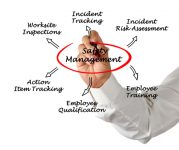Safety Training That Sticks
Employee training is both an essential feature of any workplace safety program and a constant challenge for safety professionals. To find out more about effective safety training, BLR® talked with Jeffrey Dennis, a certified safety professional and president of Industrial Safety Solutions, Inc., a safety, environmental, and industrial hygiene consulting firm located in Birmingham, Alabama. […]










